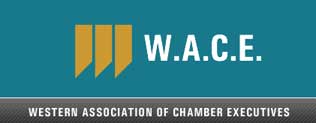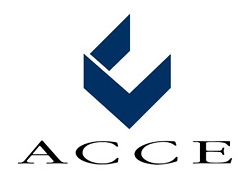Marketing is everything when it comes to chamber event names and attendance. You’ve got to grab people’s attention because – when you factor in personal and professional lives as well as family activities – it’s likely your members are receiving a lot of invites.
How do you make yours stand out? You know they aren’t spending a lot of time reading your well-crafted event description. They’re making attendance decisions based on three things:
- when it is
- what’s in it for them
- and what it’s called
Yep. They are deciding to attend your chamber event based in large part on the name of the event. That’s why we’ve created the ultimate list of chamber event names.

We’ll start with a few quick tips about timing and marketing copy for your event. Then we’ll get to the ultimate list of chamber event naming ideas. From breakfast meetings to golf tournaments and everything in between, we have a huge list of ideas that have come straight from all the wisdom shared on the Chamber of Commerce Professionals Group on Facebook.
We put it all together so you didn’t have to spend years searching through all the best posts.
So if you’re not feeling creative, don’t worry. We have you covered.
But first….
3 Quick Ways to Improve Attendance at Chamber Events
In order to maximize your attendance and/or sell more event tickets, you want to ensure your event is held at a time that is convenient to others, sounds enticing, and everyone who sees the event info knows exactly why they should attend.

Event Timing and Attendee Demographics
Event timing is critical. It’s hard to maximize attendance if your members are already scheduled elsewhere. While you can’t poll everyone on their availability, you can:
- Double-check that there isn’t a competing event already scheduled for your date. Check with neighboring communities as well.
- Avoid busy times of the year. This will depend largely on your member demographic but don’t make the mistake my college did. They scheduled a 25-year reunion for the weekend after Memorial Day. They were two main problems here. It’s prime vacation time and it’s also when school ends for a lot of kids. Most of the potential attendees were in their late forties and probably had college children or younger. That made this a very busy weekend and not an ideal time for a weekend getaway.
- Crowdsource part of the event date or time selection. For instance, find out if more people are available in the mornings, at lunch, after work, or on the weekends. You can also ask for opinions between several different times of year.
Clear Event Purpose
Your event purpose as a chamber professional is different than the reason your attendees should go to

Ensure that if you are making any guarantees about your event that you can back them up and that they have the materials/resources they need to be successful. For instance, if you talk about the quality leads at your business mixer, you should try your best to get a good variety of industries represented and educate
Naming the Event
One of the easiest ways to get people interested in your chamber event is through an exciting title. People put a lot in a name. It informs them of the kind of event it is and gets them excited about it. The name can also pique curiosity or convey tone (will it be a serious gala or a celebratory fest?).
When selecting a name for your chamber event, it’s best to select something that conveys the type of event it is but also offers some interest. The following list separates title suggestions into event categories. They were pulled from years of suggestions from chamber pros on the Chamber of Commerce Professionals Facebook group. If you’re not a member, please join us in this closed group for invaluable peer to peer learning.
Shoutout to all the chamber pros who made this huge list possible.
Chamber Event Names for Networking Groups, Events, Mixers, Open Houses or Other Casual Business Gatherings
What is a good name for networking groups? Choose something that attracts attendees and sets the tone. The name for networking groups is important because it creates an expectation for what will happen at the

- Networking @ Nite
- Chamber on Tap
- Monthly Mingle
- BASH (Business Associates Social Hour)
- Off the Clock
- The 5:05
- Business Jive After Five
- Business Connections
- Live at 5
- Alive After 5
- Members Only
- Business after Business
- Banter, Business, and Beers
- Banter and Beers
- VIB (Very Important Business Partners)
- After 5
- Unwind After 5
- Chamber Cheers
- B2B Networking
- Business Unplugged
- 5:00 Dash
- Dash in and Dash Out
- Networking in 60 Minutes or Less
- Wine – Jazz – Networking

- Community Chat and Cheers
- Business Mixer
- BA5 – business after 5
- Meet & Greet
- <Name of City> After Hours
- S.T.I.R (socialize, talk, interact, remember)
- S.W.A.P. (socials with a purpose)
Bizology After Hours- Business Unwind
- Meet Me in the Street
- Off the Clock
- Connect@5
- Chamber Power Hour (and a half)
- Mix and Mingle
- Net at Nite or Network at Night
- Check Out the Chamber
- Business Beers
- Commerce & Cocktails
- Business Made Social
Schmooza Palooza
Lunch and Learn Session Name Ideas
While some chambers name the event based on what they’re teaching, it’s a good idea to have a general name for lunch and learns and then use a catchy name that takes into account the topic as a subheading.
- Chamber Connection or Coffee Connect (for morning sessions)
- Business Insider
- Work It Wednesday, Tuesday Tuneup, or 2nd Thursday Member Mixers (these ideas help people remember when they are)
- Lunch with Leaders (speakers are community leaders)
- News @ Noon
- Power Hour
- Business Education Series
- Success in 60 (this communicates that the event will remain 60 minutes or under, a big draw for busy professionals)
- Business Studio
- Topics at 12
- Recipe for Success

- Educate 2 Cultivate (the Excelsior Chamber of Commerce uses the tagline “Because the more you know, the more you grow.”)
- Smart Seminar
- Power Lunch
- Box Talks
- Chamber Chat and Chew
- Lunch Bunch
- Workshop Lunch
- Bag It and Business
- Ask the Experts
- Game Changers
- Government Affairs Made Easy (name every lunch and learn session after the topic so it’s clear what people will learn)
- Regs and Eggs
New Member Orientation Event Names
Select a fun name for your chamber orientation and people will be less likely to skip it.

- Chamber 101
- Chamber University
- Maximize Your Membership
- Chamber VIP Luncheon or Chamber Kick Start Lunch (these could be altered slightly for breakfast meetings or an after-work event)
- Biz U
- Nacho Average Chamber, enchiLADA Chamber Benefits or Taco ‘Bout the Chamber (Mexican theme)
Chamber Golf Tournament Names
This list offers both humorous ideas and ones that are more traditional. The direction you go should depend on your community and who you want to attract, serious golfers or ones looking for a sunny day out of the office.
- Irons and Ribs, Birdies and BBQ, Birdie and Beef, or Sticks and Q (BBQ theme)
- Chamber Cup
- Luau on the Links
- Scramblin’ on the Green
- Driving Business Forward
- Chamber Golf Classic
- Chambershack
- Summer Swing
- Executive 9 & Dine (for an exclusive event)
- Swing & Sweat (for a summer event)
- Chamber Golf Outing
- The Briefcase Open Invitational
- Networking on the Green

Read our article on golf tournament alternatives.
Christmas Lighting Festival Event Names
Whether it’s a Christmas tree lighting or a holiday shopping event, these names can help you draw more people:
- Village of Lights
- Twinkle Town
- Light Up
- Lights of Love
- All That Glitters
- Oh, What Fun…
- Candlelight Home Tour
Name Ideas for Women’s Events
Some of these suggestions could be used for the event or the group.
- Women of Business
- Soe rendition of Boss Babes in the title (be aware some women may find this offensive. Selecting a title like this largely depends on your demographic and keep in mind there is already a Boss Babes organization for women in creative industries and the arts.)
- Women in Leadership
- Connected Chamber Women
- WomensNet
- Women Supporting Women
- Women In Leadership Development (WILD)

- The Diplomats
- Women’s Business Network (WBN)
- Women’s Business Alliance
- Women’s Professional Network
- Women’s Connect
- Women’s Leadership Committee
- Women Mean Business
- Women Excel (this idea explains both what it is and what’s in it for them)
- Women in Support of Enterprise (WISE)
A good chamber of

